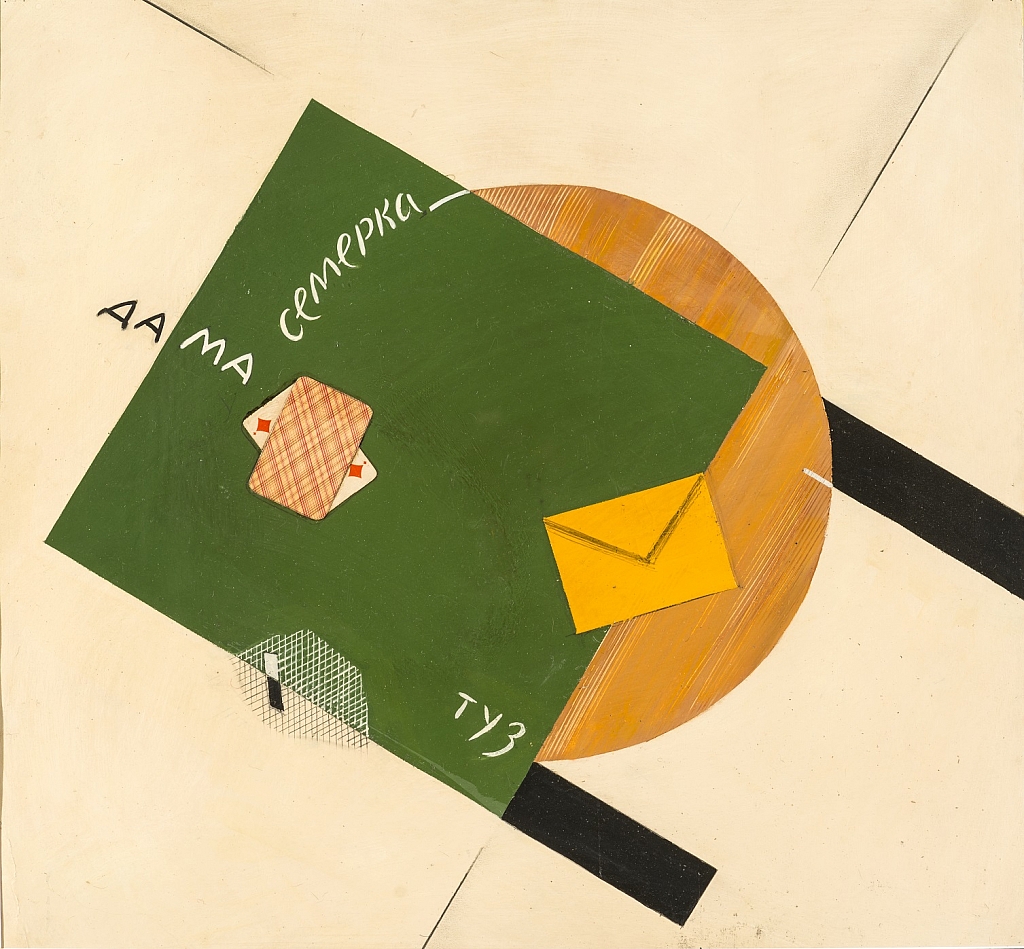
Queen, Seven, Ace (1900s)
Vladimir Nemukhin
Gouache and collage on cardboard
55X53
Vladimir Nemukhin was interested in emotional painting which did not depict concrete motifs. Abstraction became the artist’s manifesto, his public declaration. He saw a new ideology in non-figurative painting, a marker of the unity of artists across the world who could see and feel equally freely and independently.
Even at the early stage of his career Nemukhin did not paint from life, but thought up compositions. Later, having been taught by the avant-garde artist Petr Sokolov, who worked as an assistant in Kazimir Malevich’s studio, Nemukhin found out about the Impressionists and the Russian avant-garde. After the Sixth International Festival of Youth and Students in 1957, he realised that he needed to start from scratch and find like-minded people: for Nemukhin these would be the artists of the Lianozovo group.
From the mid-1960s, playing cards became a key element of Nemukhin’s work. He wrote: “In that period of my life it seems I went through a situation which enabled me to see the playing card as an artistic idea rather than an ordinary thing. I was able to interpret its plastic nature and its metaphysical essence”.



